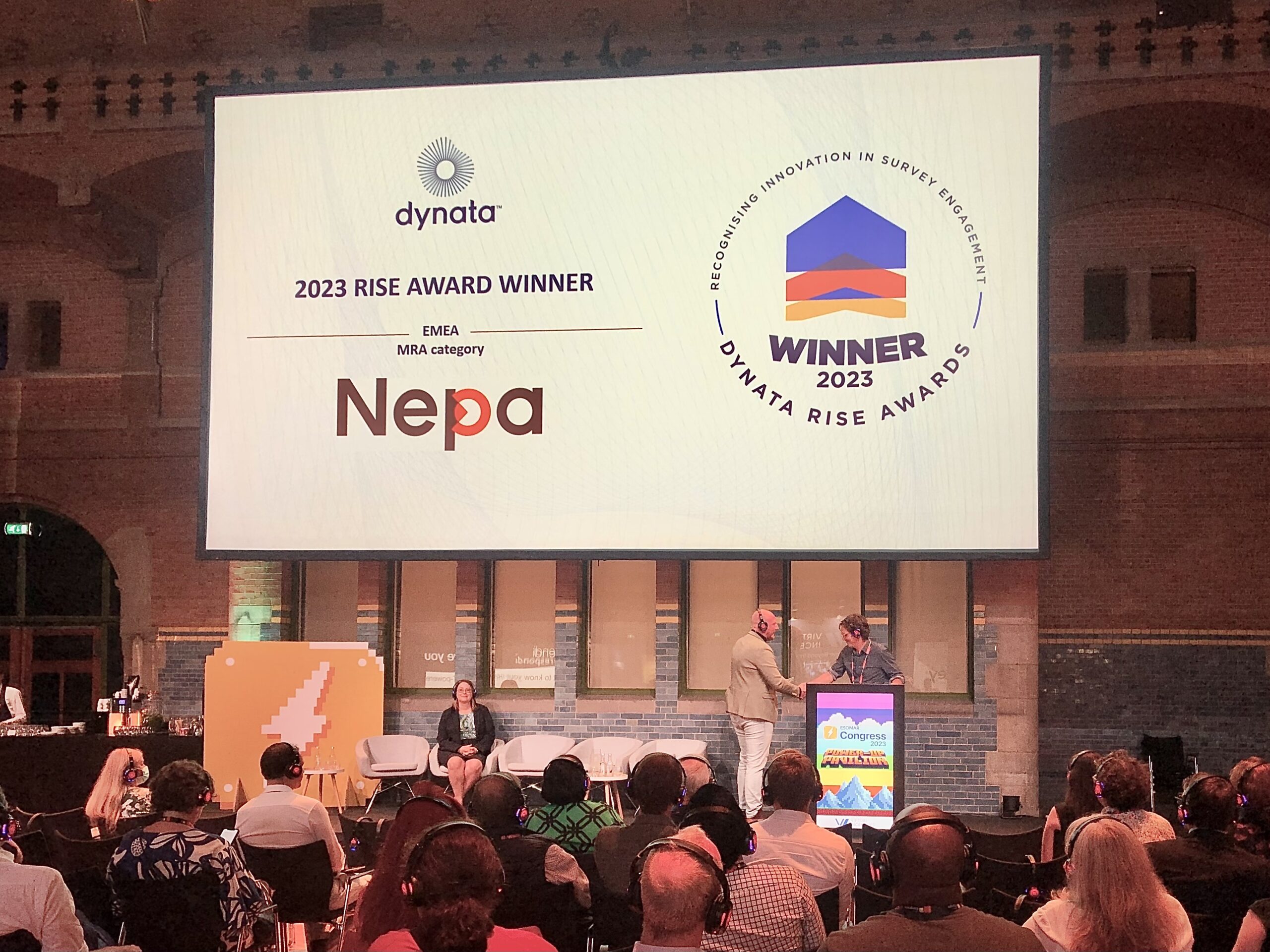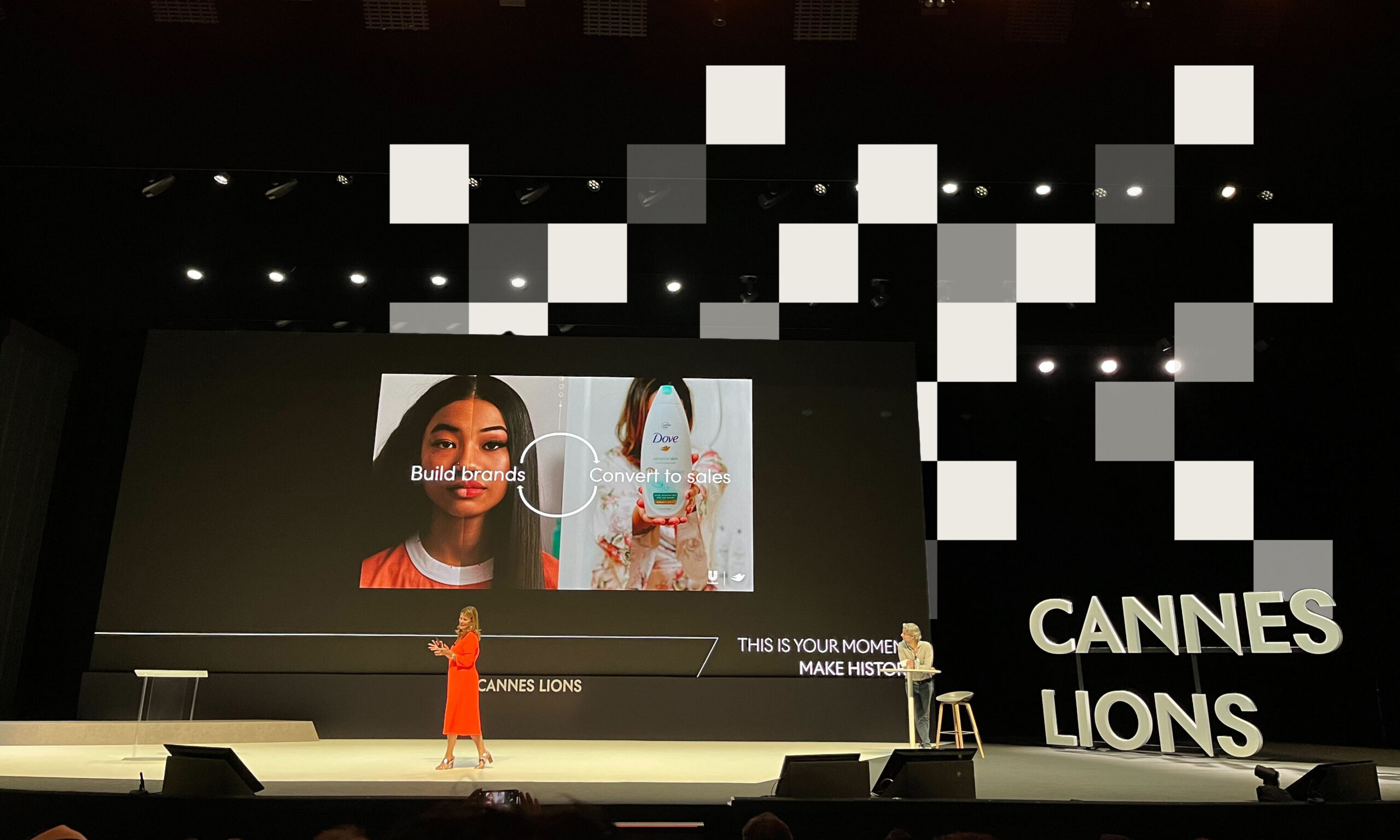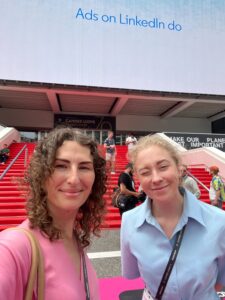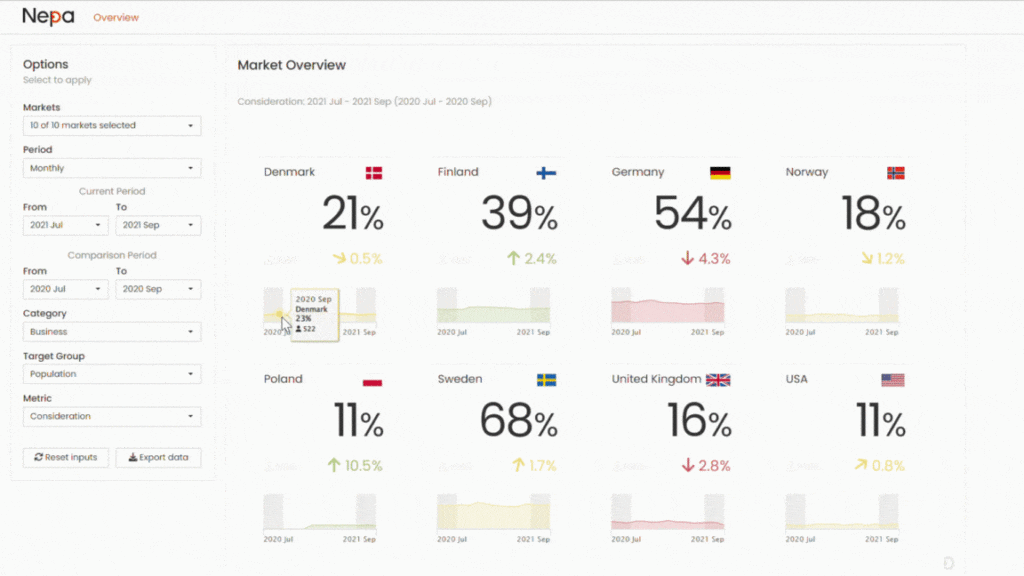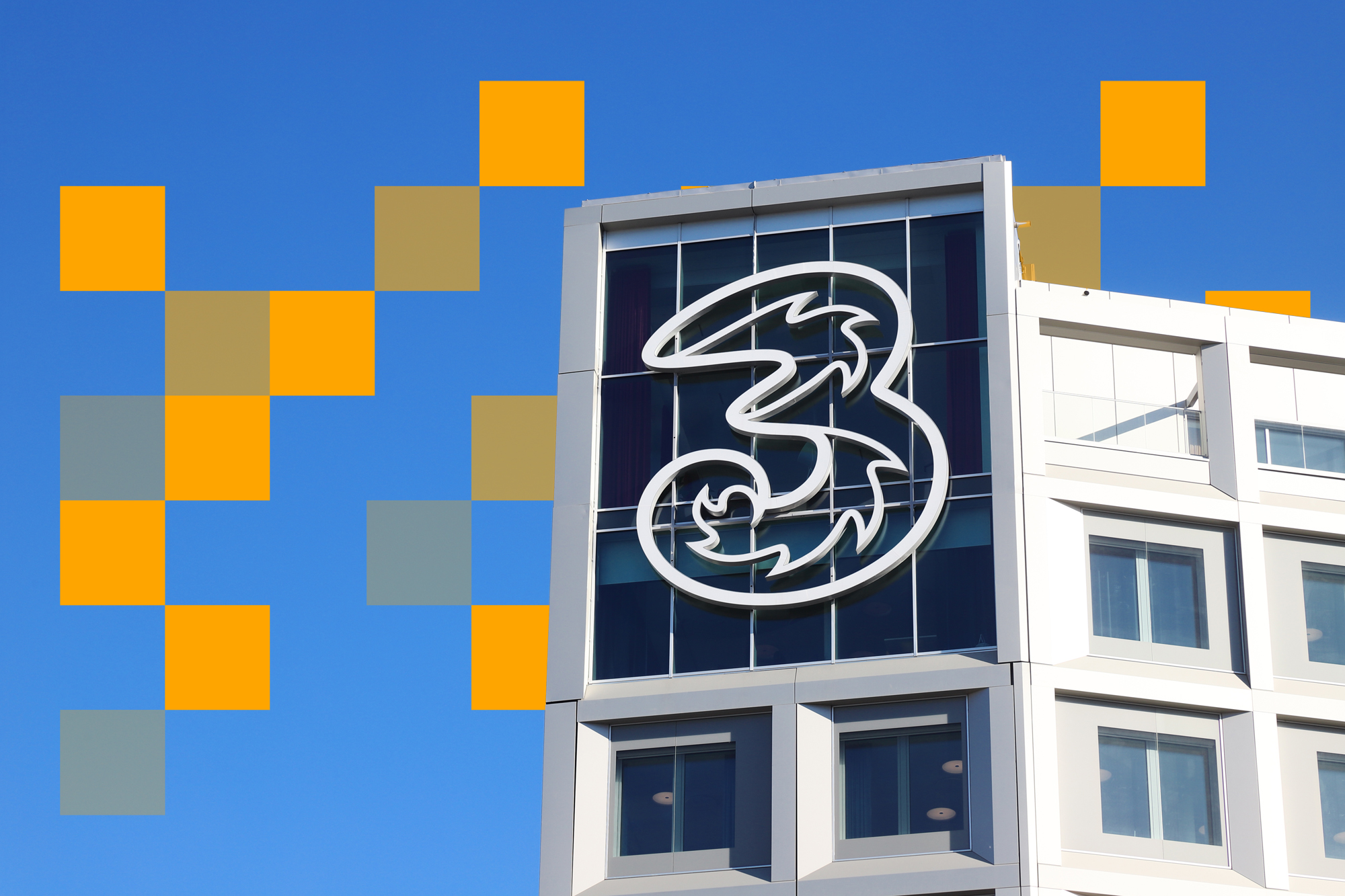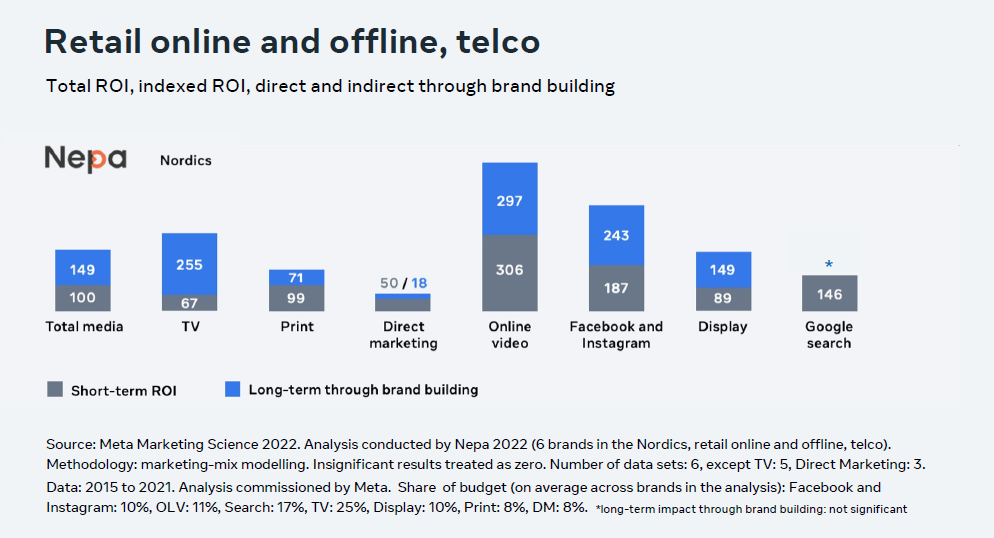And our ESOMAR Congress continues to get better! Not only have two Nepians been chosen to impart some of their market research wisdom during the conference, but we’ve only gone and received an award! We are proud to announce that we won the Market Research Agency category (EMEA) in Dynata’s 2023 RISE awards.
The RISE “Recognising Innovation in Survey Engagement” awards are all about publicly recognising Dynata’s best-performing clients, with a focus on respondent engagement. Dynata has assessed all of their clients’ surveys over the last 12 months against 3 areas of respondent impact (efficiency, engagement, and trust) against 8 different variables, such as conversion rate, abandon rate, and survey length. Once analysed, the data was ranked and the top companies identified.
So what does this mean for Nepa? This means that clients can be assured that the insights collected are based on the best possible data, ensured by best-in-class respondent engagement. Winning this award is not just a testament to our dedication and expertise, but also a reflection of the value we place on research design, panellist engagement and operational best practices.
“Surveys are at the core of great research. This award reaffirms our commitment to maintaining the highest standards of data quality, ensuring that every insight we deliver is built on a foundation of trust.
I would like to say a massive thank you to our internal expert and client teams for making this award possible. From research and design to scripting and operations, their work is the foundation of every successful project.“
Ferry Wolswinkel, Interim CEO
Read more: Nepa at ESOMAR Congress 2023
